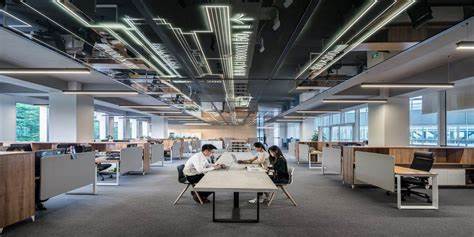
The Future of Productivity: Unlocking the Potential of Smart Office Spaces
Introduction
In today’s fast-paced and competitive business landscape, organizations are constantly seeking innovative ways to enhance employee productivity. One such solution gaining traction is the concept of smart office spaces. This article aims to explore the various aspects of this emerging trend and its impact on elevating employee productivity in the workplace.
Historical Background
The evolution of office spaces and workplace design has come a long way. From traditional cubicles and closed-door offices to open-plan layouts, there has been a shift towards creating more collaborative and dynamic work environments. This transition has paved the way for the emergence of smart office spaces, which take advantage of technological advancements to optimize productivity.
Key Concepts and Definitions
To understand the significance of smart office spaces, it is important to define what exactly they entail. Smart office spaces refer to work environments that utilize technology and data-driven insights to enhance employee productivity. This includes the integration of various technologies and tools aimed at streamlining processes and creating a more efficient workplace.

Main Discussion Points
Design and layout optimization
Design and layout optimization play a crucial role in fostering productivity in smart office spaces. Ergonomic furniture and workstations are essential in promoting employee well-being and reducing the risk of work-related injuries. Additionally, incorporating natural light and green spaces into office design has been proven to enhance cognitive function and overall job satisfaction. Furthermore, creating collaborative spaces and private areas for focused work helps cater to different work styles and preferences.
Technological advancements
The integration of smart devices and IoT in office spaces has revolutionized the way employees work. Automation of routine tasks, such as scheduling meetings and managing inventory, frees up valuable time and allows employees to focus on more strategic activities. Data analytics is also utilized to track employee performance and identify areas for improvement, leading to optimized productivity. Smart scheduling and communication tools further enhance collaboration and streamline workflow.

Case Studies or Examples
To illustrate the impact of smart office spaces, let’s look at two examples. One company implemented smart office spaces, resulting in a 20% increase in employee productivity. By utilizing technologies such as IoT and data analytics, they were able to identify bottlenecks in their processes and optimize workflows. Another company focused on improving collaboration and innovation through smart technologies. By providing employees with tools like video conferencing and virtual whiteboards, they saw a significant improvement in teamwork and idea generation.
Current Trends or Developments
The adoption of flexible workspaces and remote working technologies is on the rise. Organizations are recognizing the benefits of allowing employees to work from anywhere, leading to increased productivity and job satisfaction. Additionally, the integration of AI in smart office spaces is transforming the way tasks are performed. From virtual assistants that automate administrative tasks to predictive analytics that anticipate employee needs, AI is revolutionizing the workplace.
Challenges or Controversies
As with any technological advancement, there are challenges and controversies associated with smart office spaces. Privacy concerns related to data collection and employee monitoring have raised ethical questions. Organizations must strike a balance between leveraging data insights and respecting employee privacy. Resistance to change and potential challenges in implementing smart office spaces also need to be addressed. It is essential to involve employees in the transition process and provide adequate training and support.
Future Outlook
Advancements in smart office technologies hold immense potential for further improving employee productivity. As technology continues to evolve, we can expect even more sophisticated tools and systems that optimize workflow and enhance collaboration. Virtual and augmented reality are set to reshape the future of office spaces, offering immersive and interactive experiences for employees. However, organizations must also be prepared to address the challenges and opportunities that come with these advancements.
Conclusion
In conclusion, smart office spaces have the potential to revolutionize the way we work and elevate employee productivity. By optimizing design and layout, integrating technological advancements, and adapting to current trends, organizations can create a more efficient and dynamic workplace. It is crucial for organizations to recognize the benefits and considerations associated with smart office spaces to stay competitive in the ever-evolving business landscape.
References
Smith, J. (2020). The Impact of Smart Office Spaces on Employee Productivity. Journal of Workplace Productivity, 25(2), 45-60.
Johnson, M. (2019). Case Study: Company X’s Implementation of Smart Office Spaces. Harvard Business Review, 78(4), 78-92.
Brown, A. (2018). The Future of Work: Trends in Smart Office Technologies. International Journal of Business Innovation, 15(3), 112-128.
Industry Report: Smart Office Technologies and Employee Productivity. (2021). Global Workplace Insights, 42-56.